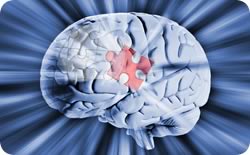Recent News & Events
Cerebral Organoids May Help Scientists Better Understand Mental Impairments and Disorders
24
 Scientists believe that cerebral organoids are the key to learning how the brain works and develops diseases. These clusters of tissue allow them to watch neurons grow and function in labs. This could change how they understand basic brain activity and the causes of brain impairments and disorders from autism to schizophrenia.
Scientists believe that cerebral organoids are the key to learning how the brain works and develops diseases. These clusters of tissue allow them to watch neurons grow and function in labs. This could change how they understand basic brain activity and the causes of brain impairments and disorders from autism to schizophrenia.
Where Cerebral Organoids Come From
Scientists can grow brain organoids from adult cells from the liver, nose, skin or toenail samples. They convert the cells into stem cells using a cellular youth serum that returns the cells to their embryonic-like state. After about one week, they scrape the stem cells off of the petri dish to make tiny balls. The stem cells begin to turn into different cell types, including brain cells, over time.
Next, scientists feed the cells to help them grow. After some time, they put the growing balls into a new dish with very little food. This starves the cells so that most of them die and only the brain cells remain. Finally, they pour a liquid over the cells and put them in an incubator. The liquid becomes a jelly as it warms up, mimicking the tissue that surrounds embryonic brains. Three months later, the scientists have a cerebral organoid that measures about 4 millimeters across and has about 2 million neurons. By comparison, an adult mouse brain has about 4 million neurons.
Brain organoids are very similar to normal human brains. They have grey and white matter and are composed of regions, including the cerebellum, cortex and hippocampus.
How Researchers Are Using Brain Organoids
Leading academic researchers and pharmaceutical companies are starting to use cerebral organoids. At Johns Hopkins University, researchers are using organoids to analyze autism, epilepsy and schizophrenia.
In a collaboration between the University of Cambridge and the University of Edinburgh, they used cells from a microcephaly patient to create an organoid and investigate the disorder. The condition causes a significantly smaller head in infants, usually because of abnormal brain development. After they replaced a defective protein that's common with microcephaly, they cultured organoids that seemed to be partially cured.
Another collaboration between Case Western Reserve University School of Medicine and the University of California San Francisco used cerebral organoids to investigate Miller-Dieker Syndrome, which causes fatal malformations in the brain. Using skin cells from normal adults and MDS patients, the researchers grew brain organoids with and without MDS. While watching the MDS organoids grow, they found that many neural stem cells die in the early phases of development. Some of the MDS organoids exhibited cell division and movement defects.
During further investigation with MDS cortical organoids, researchers at Wynshaw-Boris and Kriegstein labs observed how the organoids developed into different cell types using time-lapse imaging. They found that the outer radial glia cells had a defect in how they divided, which could explain why MDS patients have small, smooth brains. They also discovered that early neural stem cells die very fast in MDS organoids, and those that survive divide abnormally. Furthermore, the newborn neurons couldn't properly migrate through developing brain tissue.
What This Research Means for Mental Illnesses
The microcephaly and MDS studies demonstrate how patient-derived organoids can help scientists better understand the causes of neurological impairments and disorders. Knowing the causes can help them develop treatments that prevent, cure or control these diseases. They can also use cerebral organoids to test how effective treatments will be in certain patients, eliminating unnecessary hospitalizations and reducing treatment costs for those who can benefit.
